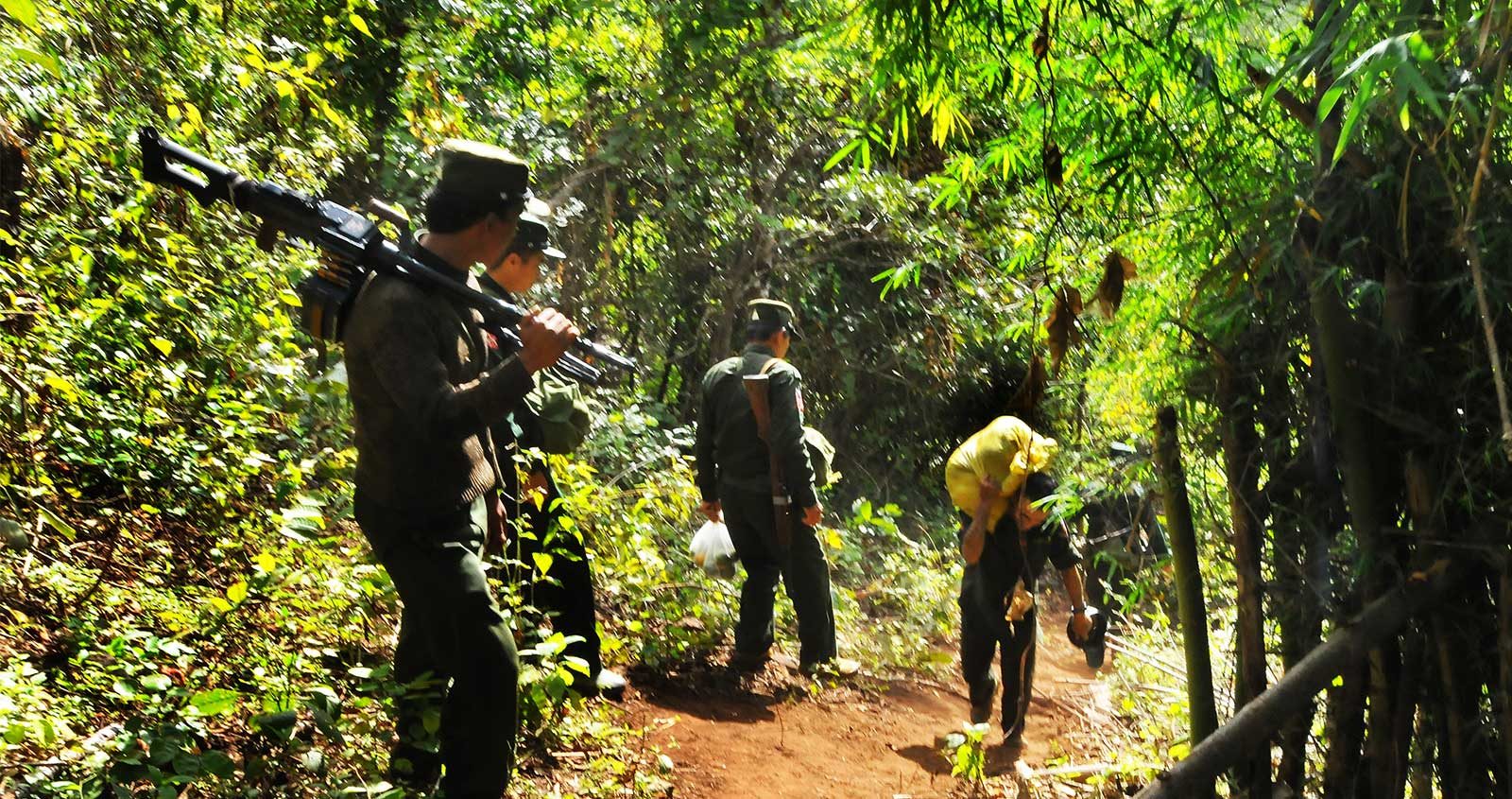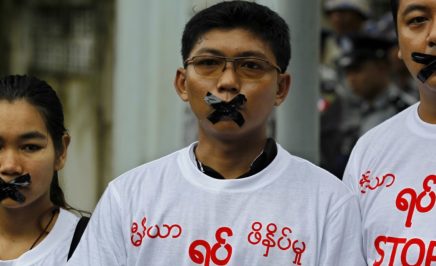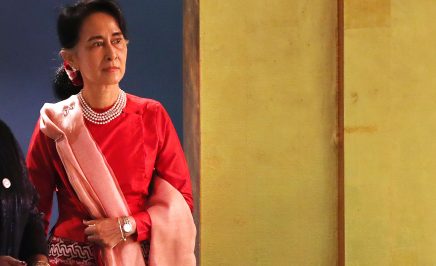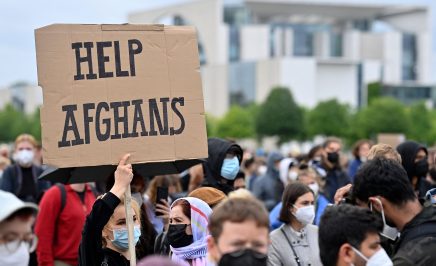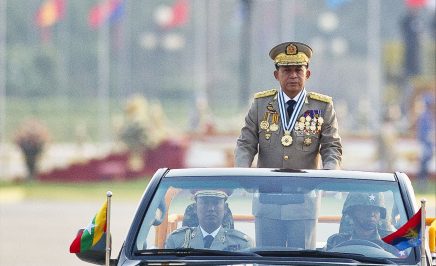When Ngau Masar watched her husband Le Mei Tah speed off on his motorbike on the morning of 4 December 2016, little did she know she might never see him again.
Two weeks earlier, heavy fighting had prompted the family to flee to China from their village in northern Myanmar. When they returned, they joined thousands of others in makeshift camps near the border. Soldiers remained ubiquitous in the area’s villages, where some houses showed damage from airstrikes. There was no feed left for their farm animals, so Ngau Masar asked Le Mei Tah if he could go to a neighboring village to grind grain. That was the last she saw or heard of him. That day, he was one of two people disappeared by the Myanmar Army.
In northern Myanmar, tens of thousands of civilians, particularly from ethnic minorities, are caught up in a cycle of displacement and abuse. The conflict has been raging since 2011, garnering little attention outside the country.
It should be on the radar. In late May 2017, the Myanmar government hosted the second round of peace talks in nine months, known as the 21st Century Panglong Conference. Long-time democracy activist Aung San Suu Kyi, who came to power after historic elections in 2015, has prioritized reconciliation and ending the country’s long-running internal armed conflicts. But, during the same nine months, the army carried out military offensives in northern Myanmar that have often been marked by war crimes and other human rights violations against civilians.
Much of the heaviest fighting has been near the China border, in Myanmar’s Kachin and northern Shan States. There, the army and different ethnic armed groups have fought on and off for decades, linked to a broader struggle in Myanmar over governance, resource control, and ethnic minority rights. Over the course of three research missions between March and May 2017, we documented how the army has often failed to distinguish civilians from combatants—carrying out extrajudicial executions, torture, and indiscriminate shelling.
Ten days before Le Mei Tah’s disappearance, the Myanmar Army fought with an ethnic armed group near the village of Nam Hkye Ho. Most people fled as the fighting started, but some men stayed behind to watch over the village. When army soldiers entered, they rounded the men up.
Two witnesses I interviewed hid and watched as 18 men were marched off at gunpoint; then they heard gunfire. The witnesses fled to China, returning weeks later to find several shallow holes in the forest near the village. One told me:
“We dug in one hole. A woman recognized her husband’s keychain. Another one recognized a shoe. It looked like the bodies had been burned.”
The witnesses said the young men were farmers, not fighters.
Myanmar is changing fast, but the army doesn’t seem to be changing with it. What’s happening in northern Myanmar fits a broader pattern that goes back decades and continues to occur elsewhere in the country. Last year, assailants from the Rohingya ethnic minority attacked border outposts in Rakhine State. Myanmar’s security forces responded with “clearance operations,” sealing off the area and committing grave human rights violations against civilians that may amount to crimes against humanity.
Such crimes should come as little surprise. The Myanmar military operates free from independent oversight. Under Myanmar law, it has control over its own judicial processes. Soldiers almost never face credible investigation, much less prosecution, even for war crimes. The army also still controls the key government ministries of Defense, Border Affairs, and Home Affairs.
Ngau Masar told me that she wanted two things: justice for her husband and to find his body.
In the days after Le Mei Tah’s enforced disappearance, she had gone with a community leader and the wife of another victim to a military base, trying to find him. She believed, based on the commander’s responses, that they knew what happened to her husband, but wouldn’t tell her. Seven months on, she still doesn’t know.
While the military was responsible for most of the human rights violations we documented, they are not alone. Many people in northern Myanmar see the ethnic armed groups as their protectors, but these groups also commit serious abuses, including abductions and forced recruitment—sometimes of children. The army and some armed groups also lay landmines and similar weapons that are inherently indiscriminate. Dozens of civilians in northern Myanmar have been killed or maimed by such weapons this year alone.
Aung San Suu Kyi has been painfully silent on the major human rights violations in both northern Myanmar and Rakhine State. Her quasi-civilian government has, along with the military, restricted humanitarian access to the more than 98,000 people displaced by the conflict in northern Myanmar, in particular to the tens of thousands who live in areas controlled by ethnic armed groups. This has needlessly compounded the suffering of an already-vulnerable population.
The government and military should immediately end these humanitarian access restrictions, allowing aid to move freely to all parts of the country. They should also throw their full support behind the independent, international fact-finding mission recently established by the U.N. to look into recent human rights violations and abuses in Myanmar. At the moment, the government has rejected the investigation team’s mission and appears unlikely to allow access.
Reform of the military is unlikely to be easy. Many of Myanmar’s partners are pouring significant support into the country, including for the peace process. Donors like Norway, the European Union, and Japan need to demand tangible progress toward ending the culture of impunity.
If the peace process is to have any chance of success, respect for human rights and accountability for serious violations have to be at its center.
Matthew Wells is a Senior Crisis Adviser at Amnesty International and author of the report,“All the Civilians Suffer”: Conflict, Displacement, and Abuse in Northern Myanmar. This article was originally posted on Newsweek here.
